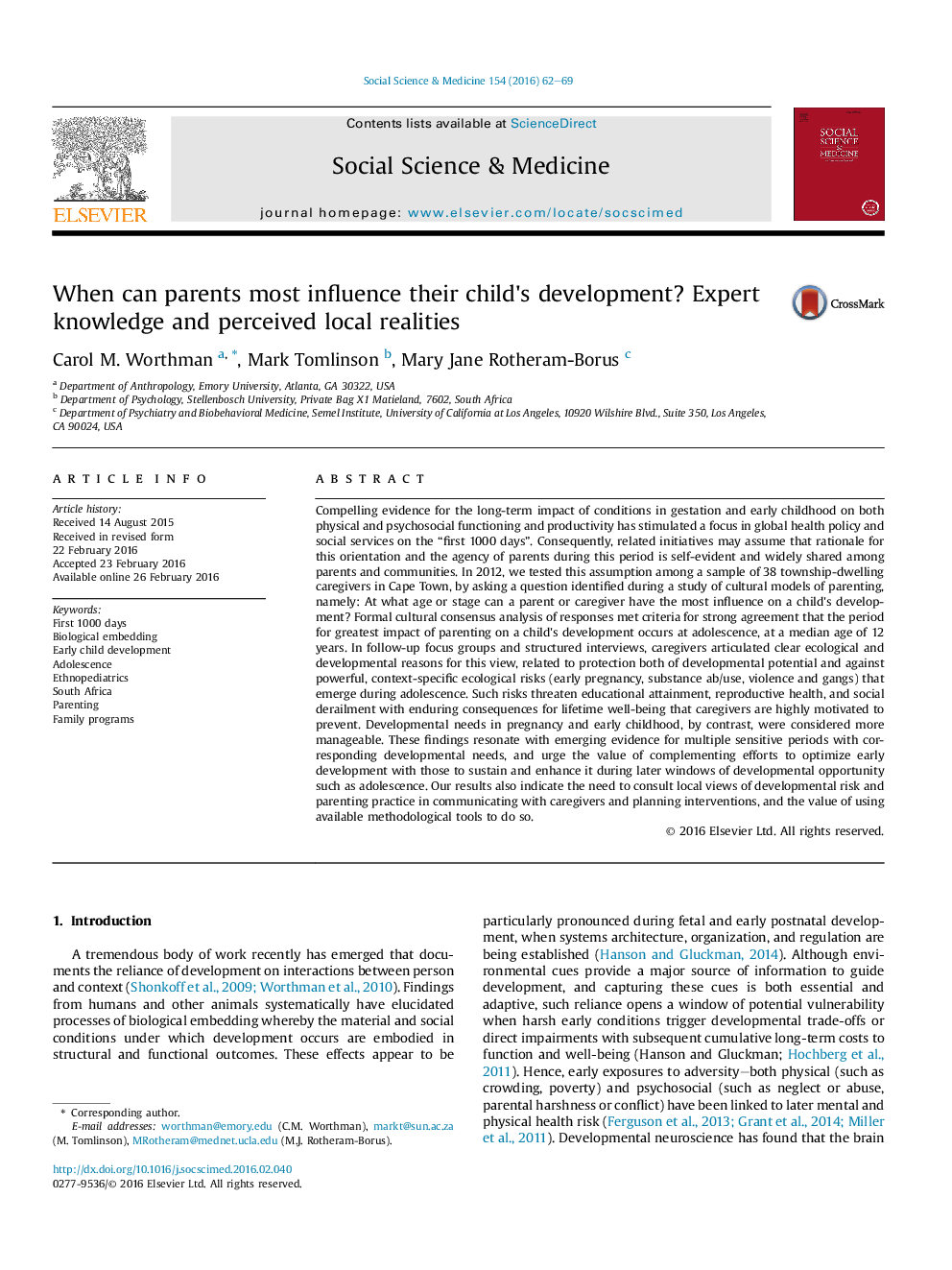| کد مقاله | کد نشریه | سال انتشار | مقاله انگلیسی | نسخه تمام متن |
|---|---|---|---|---|
| 952221 | 1476015 | 2016 | 8 صفحه PDF | دانلود رایگان |
• Parents may not share expert views about importance of early child care quality.
• Parents may prioritize acute, concrete over long-term developmental risks.
• Puberty trumps infancy for parent concerns in a high risk setting.
• As a critical period of development, adolescence merits more attention.
Compelling evidence for the long-term impact of conditions in gestation and early childhood on both physical and psychosocial functioning and productivity has stimulated a focus in global health policy and social services on the “first 1000 days”. Consequently, related initiatives may assume that rationale for this orientation and the agency of parents during this period is self-evident and widely shared among parents and communities. In 2012, we tested this assumption among a sample of 38 township-dwelling caregivers in Cape Town, by asking a question identified during a study of cultural models of parenting, namely: At what age or stage can a parent or caregiver have the most influence on a child's development? Formal cultural consensus analysis of responses met criteria for strong agreement that the period for greatest impact of parenting on a child's development occurs at adolescence, at a median age of 12 years. In follow-up focus groups and structured interviews, caregivers articulated clear ecological and developmental reasons for this view, related to protection both of developmental potential and against powerful, context-specific ecological risks (early pregnancy, substance ab/use, violence and gangs) that emerge during adolescence. Such risks threaten educational attainment, reproductive health, and social derailment with enduring consequences for lifetime well-being that caregivers are highly motivated to prevent. Developmental needs in pregnancy and early childhood, by contrast, were considered more manageable. These findings resonate with emerging evidence for multiple sensitive periods with corresponding developmental needs, and urge the value of complementing efforts to optimize early development with those to sustain and enhance it during later windows of developmental opportunity such as adolescence. Our results also indicate the need to consult local views of developmental risk and parenting practice in communicating with caregivers and planning interventions, and the value of using available methodological tools to do so.
Journal: Social Science & Medicine - Volume 154, April 2016, Pages 62–69
